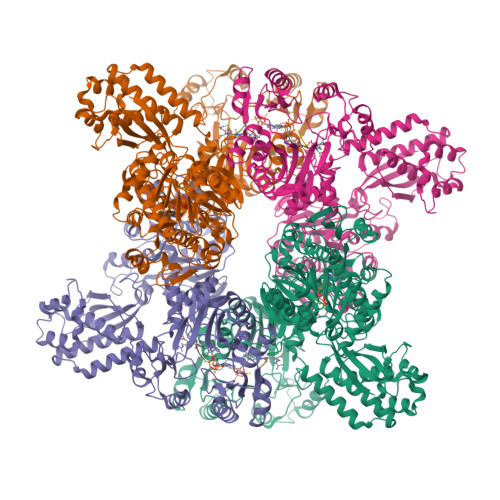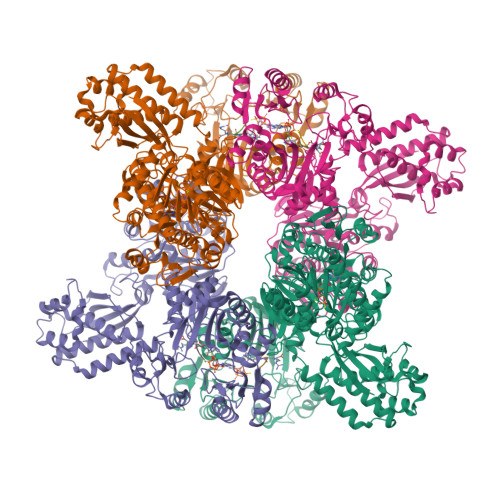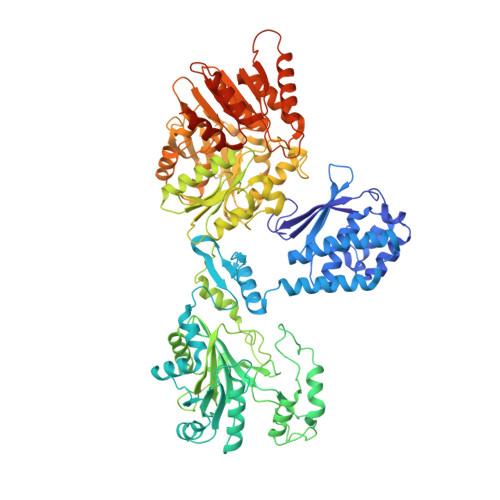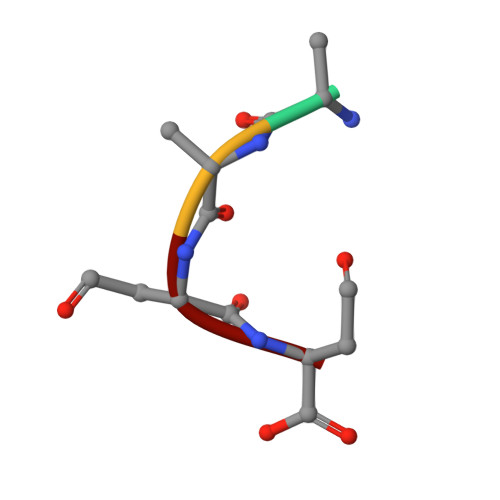Structural bases for aspartate recognition and polymerization efficiency of cyanobacterial cyanophycin synthetase.
Miyakawa, T., Yang, J., Kawasaki, M., Adachi, N., Fujii, A., Miyauchi, Y., Muramatsu, T., Moriya, T., Senda, T., Tanokura, M.(2022) Nat Commun 13: 5097-5097
- PubMed: 36042318
- DOI: https://doi.org/10.1038/s41467-022-32834-8
- Primary Citation of Related Structures:
7WAC, 7WAD, 7WAE, 7WAF - PubMed Abstract:
Cyanophycin is a natural biopolymer consisting of equimolar amounts of aspartate and arginine as the backbone and branched sidechain, respectively. It is produced by a single enzyme, cyanophycin synthetase (CphA1), and accumulates as a nitrogen reservoir during N 2 fixation by most cyanobacteria. A recent structural study showed that three constituent domains of CphA1 function as two distinct catalytic sites and an oligomerization interface in cyanophycin synthesis. However, it remains unclear how the ATP-dependent addition of aspartate to cyanophycin is initiated at the catalytic site of the glutathione synthetase-like domain. Here, we report the cryogenic electron microscopy structures of CphA1, including a complex with aspartate, cyanophycin primer peptide, and ATP analog. These structures reveal the aspartate binding mode and phosphate-binding loop movement to the active site required for the reaction. Furthermore, structural and mutational data show a potential role of protein dynamics in the catalytic efficiency of the arginine condensation reaction.
Organizational Affiliation:
Department of Applied Biological Chemistry, Graduate School of Agricultural and Life Sciences, The University of Tokyo, 1-1-1 Yayoi, Bunkyo-ku, Tokyo, 113-8657, Japan.





















